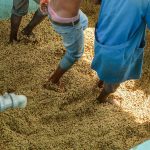A flourishing garden can be a sanctuary, but wildlife pests pose a significant threat to its beauty and health. Understanding how to effectively deter unwelcome visitors is essential for every gardener in the UK. This guide explores practical and environmentally friendly strategies to keep your garden thriving. With a blend of proactive measures and natural deterrents, you'll empower yourself to protect your plants and maintain a lush, vibrant outdoor space. Let's get started on your journey to a pest-free garden!
Understanding the Threat of Wildlife Pests
Wildlife pests in UK gardens can pose significant challenges for gardeners, affecting both plant growth and overall garden health. Common pests include slugs, snails, aphids, and rabbits. These creatures can cause considerable damage by feeding on leaves, stems, and roots, which may lead to stunted plant growth or even plant death.
A lire aussi : Savor the flavor : top tomato varieties for every garden
Slugs and snails are notorious for their nocturnal activities, particularly during the damp months of spring and autumn. They leave behind a trail of destruction, devouring tender shoots and leaves. Aphids, on the other hand, are more active during warmer months, such as late spring and summer. They suck sap from plants, weakening them and potentially spreading diseases. Meanwhile, rabbits can be a year-round nuisance, munching on a wide range of plants and vegetables.
Seasonal variations play a crucial role in pest activity. Understanding these patterns can help gardeners implement timely and effective pest control measures. For instance, employing barriers or natural predators during peak pest seasons can mitigate damage. By being vigilant and proactive, gardeners can maintain a thriving and healthy garden despite the presence of wildlife pests.
Sujet a lire : Effective Strategies to Combat Soil Erosion in Your Sloped UK Garden
Physical Barriers for Pest Control
Implementing physical barriers for garden protection is a practical solution to deter wildlife pests. These barriers provide a non-toxic method to safeguard plants and maintain garden health.
Fencing Solutions
Fencing is a reliable option for keeping larger pests, such as rabbits, at bay. The effectiveness of different fencing types can vary. For instance, a wire mesh fence buried several inches underground prevents rabbits from digging underneath. Solid wood or metal fences offer durability and can withstand harsh weather conditions. Selecting the right fence depends on the specific pest threat and garden layout.
Netting and Mesh
Netting and mesh are ideal for protecting plants from smaller pests like slugs and aphids. Choosing the right mesh for specific pests is crucial. Fine mesh can block tiny insects, while larger mesh sizes are suitable for birds or larger insects. Ensure the netting is securely anchored to prevent pests from sneaking underneath.
Ground Covers
Ground covers can effectively deter garden intruders by creating a physical barrier over the soil. Mulch, gravel, or even specific plants like clover can discourage pests from reaching plant roots. Additionally, ground covers help retain soil moisture and suppress weed growth, contributing to overall garden health.
Natural Repellents and Deterrents
When tackling wildlife pests, natural pest repellents offer an eco-friendly alternative to chemical solutions. These repellents utilise ingredients that deter pests without harming the environment or beneficial garden inhabitants.
Overview of Effective Natural Repellents
Natural repellents can range from essential oils like peppermint and eucalyptus to household items such as garlic and chilli pepper. These substances emit strong odours that are unpleasant to pests, effectively keeping them at bay. Additionally, planting pest-repelling plants like marigolds or lavender can enhance the garden's defence.
How to Make DIY Repellents at Home
Creating DIY natural pest repellents is straightforward and cost-effective. A simple spray can be made by mixing water with crushed garlic or a few drops of essential oil. Applying this mixture to plant leaves can deter pests like aphids and slugs. Another method involves sprinkling crushed eggshells around plants to ward off slugs and snails.
Pros and Cons of Using Chemical vs. Natural Solutions
While chemical solutions can be more potent, they may harm non-target organisms and disrupt the garden ecosystem. In contrast, natural repellents offer a safer option, though they might require more frequent application. Balancing these methods can lead to a sustainable pest management strategy.
Habitat Modifications for Pest Prevention
Creating a garden environment that naturally deters pests is a proactive approach to maintaining garden health. By strategically implementing habitat modification for gardens, you can reduce pest issues effectively.
Plant Selection
Choosing pest-resistant plants is a crucial step in habitat modification. Opt for varieties that are naturally unappealing to common pests. For instance, plants with aromatic foliage, such as lavender or rosemary, can deter rabbits and insects. Additionally, incorporating native plants can enhance garden resilience, as they are better adapted to local pest challenges.
Garden Layout
Designing your garden layout to minimise pest attraction involves thoughtful planning. Consider spacing plants appropriately to improve air circulation, reducing the likelihood of fungal diseases. Implementing companion planting, where certain plants benefit each other, can also deter pests. For example, planting marigolds near vegetables can repel aphids and nematodes.
Maintenance Practices
Regular maintenance practices are essential in preventing pest infestations. Keep your garden tidy by removing dead leaves and debris, which can harbour pests. Regularly inspect plants for signs of pest activity and address issues promptly. Pruning and thinning plants not only enhance growth but also reduce hiding spots for pests. By maintaining a clean and organised garden, you create an environment less conducive to pest habitation.
Using Traps and Relocation Strategies
When dealing with garden pests, trapping and relocating offers a humane solution. There are various types of traps designed for different wildlife pests. For instance, cage traps are effective for capturing rabbits, while pitfall traps can be used for slugs and snails. It's crucial to select the appropriate trap based on the specific pest you're targeting to ensure effectiveness.
Best Practices for Humane Pest Relocation
Humane pest relocation involves several best practices. First, regularly check traps to minimise stress on captured animals. Next, ensure the relocation site is suitable and far enough from your garden to prevent return. This site should offer adequate food and shelter, allowing the pest to thrive without causing harm to the new environment.
Legal Considerations for Trapping Wildlife in the UK
In the UK, it's essential to adhere to legal regulations when trapping wildlife. The Wildlife and Countryside Act 1981 outlines specific guidelines to ensure humane treatment. For example, captured animals must not be released into unfamiliar habitats where they might struggle to survive. Additionally, certain species may have specific protection laws, requiring permits for trapping and relocation. Always consult local regulations to ensure compliance and ethical pest management.
Professional Pest Control Options
For gardeners facing persistent pest issues, professional pest management services can offer effective solutions. These services are equipped with expertise and resources to manage infestations efficiently.
When to Seek Help
Consider seeking professional assistance when DIY methods fail or when dealing with severe infestations. Indicators include extensive plant damage, recurring pest problems, or when pests pose health risks. Professionals can assess the situation and implement targeted strategies.
What to Expect from Services
Pest control companies provide a range of services tailored to specific needs. Expect a thorough inspection to identify pest types and infestation levels. Professionals use integrated pest management techniques, combining physical, chemical, and biological methods for comprehensive control. They also offer follow-up visits to ensure long-term effectiveness.
Cost Considerations
Budgeting for pest management solutions is crucial. Costs vary based on factors like pest type, infestation severity, and treatment frequency. Some companies offer packages or contracts for regular maintenance, which can be cost-effective in the long run. Compare quotes from multiple providers to find a service that fits your budget while ensuring quality and reliability.
Maintaining Long-term Garden Health
Ensuring long-term garden pest management requires consistent effort and strategic planning. Regular monitoring and assessment of your garden are crucial. By frequently inspecting plants, you can identify pest problems early, preventing them from escalating. This proactive approach allows for timely interventions, maintaining the garden's health and vitality.
Building a resilient garden ecosystem plays a pivotal role in managing pests sustainably. Incorporate diverse plant species to attract beneficial insects that naturally control pest populations. For instance, ladybirds can help manage aphid infestations. Additionally, fostering healthy soil through regular composting and mulching enhances plant resilience against pests.
Community resources and support can be invaluable for gardeners. Many local gardening clubs and online forums offer advice on effective pest management strategies. Engaging with these communities provides access to shared knowledge and experiences, helping you refine your approach to pest control. Moreover, some communities organise workshops or events focused on sustainable gardening practices, offering hands-on learning opportunities.
By integrating these strategies, gardeners can achieve a balanced ecosystem where pests are naturally managed, ensuring the garden remains a thriving and healthy space over the long term.
















